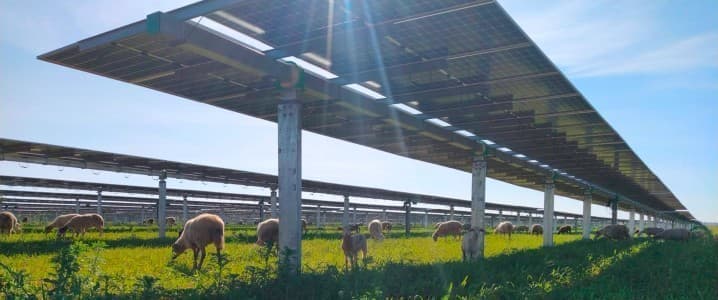
As governments worldwide push for a green transition, companies around the globe are investing heavily in research and development into innovative ways to improve renewable energy production. New technologies are making conventional renewable energy projects, such as solar and wind farms, far more efficient as companies build stronger panels and bigger turbines. Now, one German team believes it has found a new light-harvesting system that could massively increase solar energy production.
Conventional solar panels rely on silicon-based solar cells that absorb light across the entire visible spectrum, but only weakly. These solar cells must be several micrometers thick to enable them to absorb sufficient protons to generate electricity. This makes them heavy, expensive, and difficult to situate in small spaces. By contrast, thin-film solar cells, which are made up of organic dyes, are both cheaper and lighter, just 100 nanometres thick. However, they are only capable of absorbing a small portion of the solar spectrum. Scientists have been searching for years for a solution, aiming to make solar panels more efficient while keeping weight and cost down.
Now, scientists at the University of Würzburg in Bavaria, Germany believe they may have discovered the structure needed to massively enhance solar power production. Researchers recently published a study in the journal Chem demonstrating the use of a URPB system – standing for ultraviolet, red, purple, and blue, which is based on the photosynthetic antennae in plants and bacteria that are capable of efficiently capturing sunlight. The URPB model uses four different dyes that are stacked in a precise configuration that allows them to efficiently capture light across UV, visible, and near-infrared wavelengths.
During the testing phase, the team of researchers was able to convert 38 percent of incoming light into useful energy. Whereas the four dyes on their own manage less than one percent to a maximum of three percent. JMU chemistry professor Frank Würthner explained, “Our system has a band structure similar to that of inorganic semiconductors. This means that it absorbs light panchromatically across the entire visible range. And it uses the high absorption coefficients of organic dyes. As a result, it can absorb a great deal of light energy in a relatively thin layer, similar to natural light-harvesting systems.”
The next challenge will be scaling up the process for commercial use. While there has been success in using the technology to produce energy in a laboratory environment, there are always greater challenges when it comes to putting new technology into use in a real-world environment.
This is just the latest technology being tested around the globe aimed at enhancing solar energy production. Incentivized by higher levels of public funding and financial incentives, such as tax breaks, and driven by the need to boost the world’s renewable energy capacity to reduce fossil fuel consumption, companies worldwide are investing heavily in research and development in the solar energy sector. Solar power production has come leaps and bounds in the last decade. Solar panel efficiency has increased from around 17% in 2012 to between 22 percent and 29 percent today, while production costs have fallen and the price per watt of solar panels has decreased from around $5 in 2000 to less than 50 cents today.
Solar photovoltaic (PV) is the fastest-growing energy source globally, according to the International Renewable Energy Agency (IRENA), having grown around 26-fold since 2010. By the end of 2022, there was a global installed solar PV capacity of 1,047 GW, with 191 GW added in 2022 alone.
Earlier this year, Turkish researchers published a study showing the potential for a semi-spherical photovoltaic solar cell structure that they believed could absorb up to 66 percent more light than conventional flat panels. The team is now looking to produce a prototype to test the technology, which looked promising in computer simulations.
There is also optimism around the use of perovskite solar cells (PSCs) thanks to their high performance and low production costs. PSCs have shown great progress in recent years, with significant efficiency improvements, from around 3 percent in 2009 to more than 25 percent today. This has encouraged the U.S. Department of Energy (DoE), and other public and private institutions around the world to invest heavily in the improvement of PSC technology.
To date, most PSC testing has been conducted in a laboratory environment. However, a cross-country team of researchers in the U.S., led by the University of North Carolina, is moving tests outside. The U.S. DoE’s Perovskite PV Accelerator for Commercialising Technologies (PACT) center succeeded in using the technology outside for 29 weeks and achieving operational efficiency of over 16 percent. Laura Schelhas, an NREL chemistry researcher, explained, “Real-world demonstration is a critical step towards commercialization, and we hope by PACT offering these capabilities researchers and companies can leverage this data toward improved reliability.”























